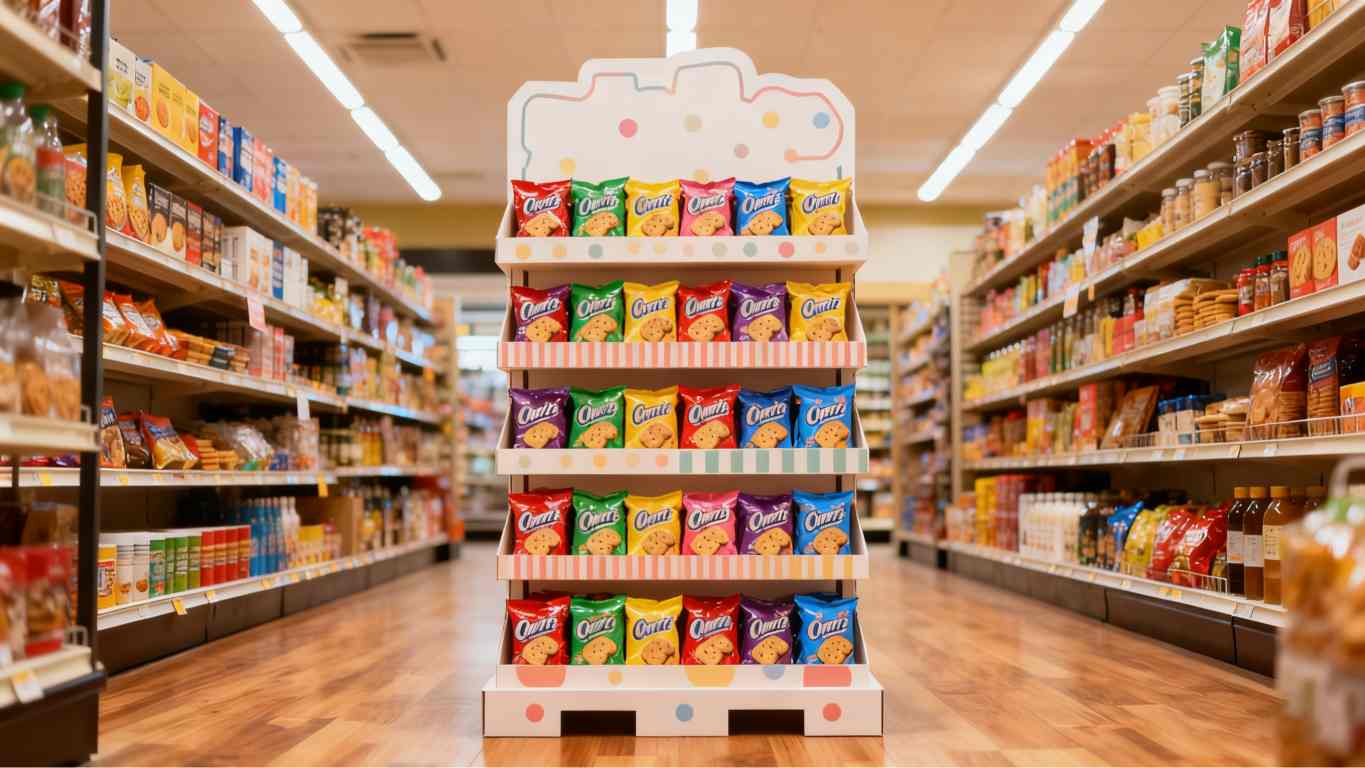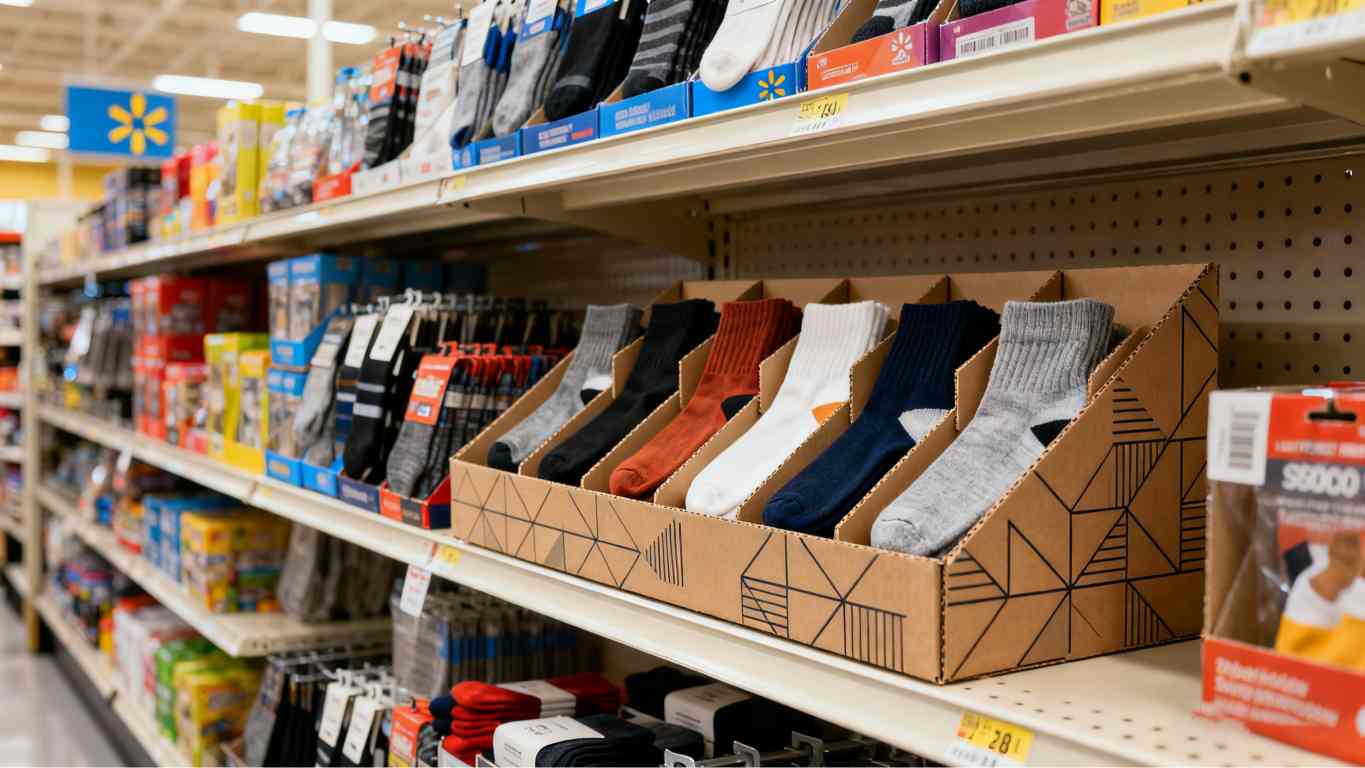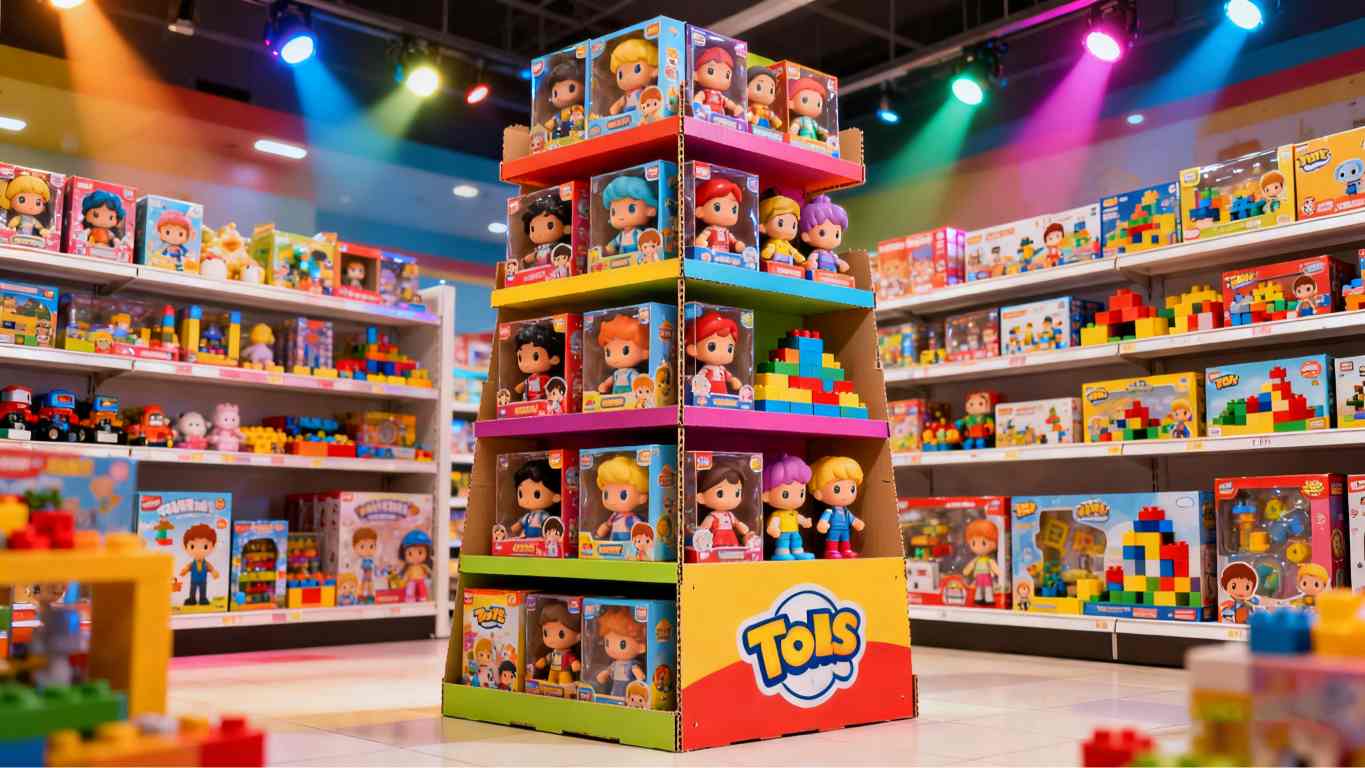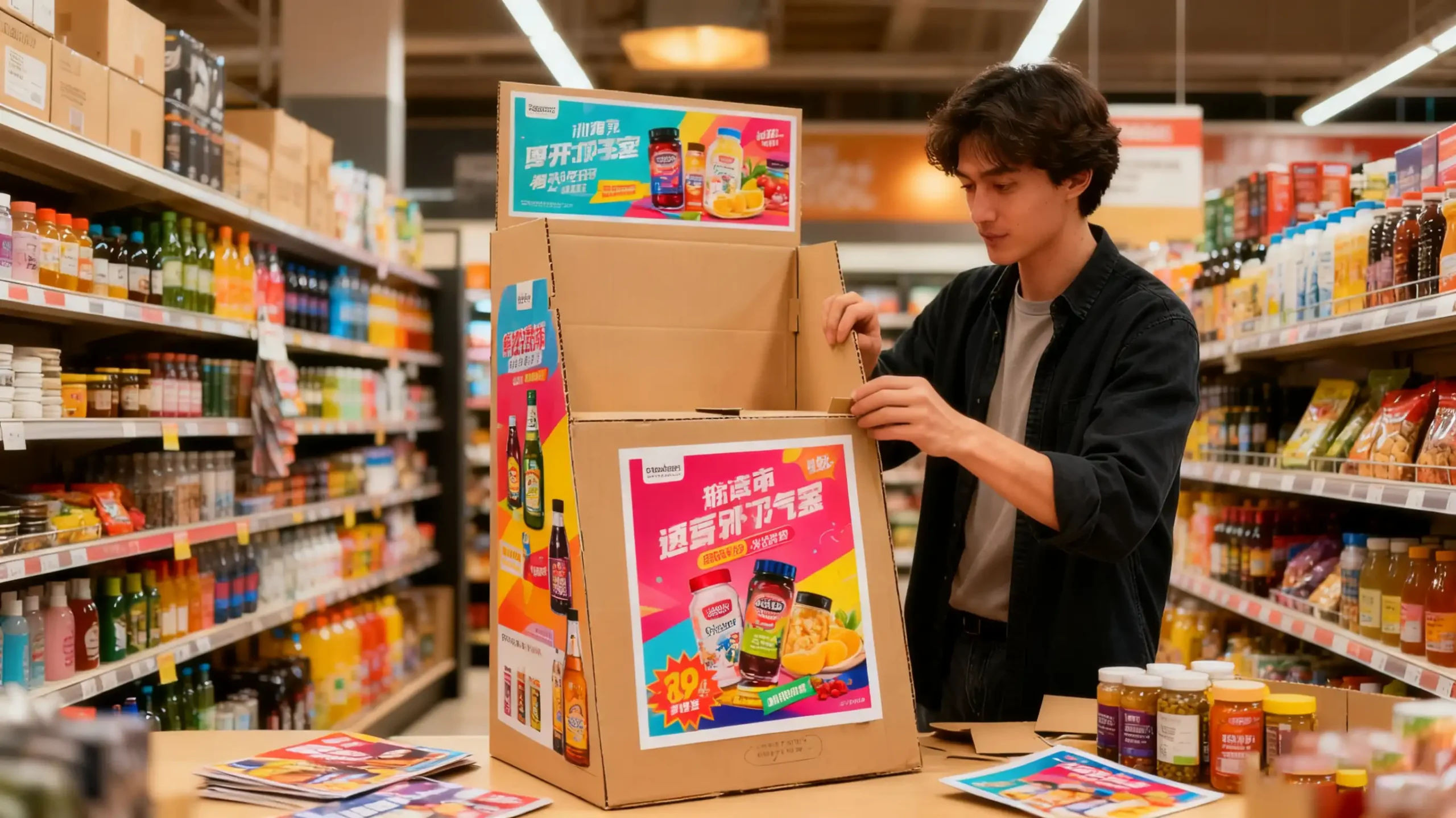Your product gets lost on crowded shelves? You're losing sales by not being at eye level. Sidekick displays offer a smart, space-saving solution to grab customer attention and boost sales.
Sidekick displays, also called power wings, are compact retail units that hang on the sides of endcaps. The main types are standard single-faced displays, reinforced power wings for heavier items, and multi-tiered units for varied products. They are best for promoting impulse buys and new items.

I've seen sidekicks work wonders for countless clients over my 16 years in this business. They are a secret weapon in the retail world if you know how to use them right. But not all sidekicks are created equal. The design you choose can be the difference between a bestseller and a missed opportunity. Let's break down the different types so you can choose the perfect one for your product and strategy.
How Do Standard Sidekick Displays Boost Impulse Buys?
Need to capture that last-minute shopper's attention? Your product isn't positioned for the final impulse buy. A standard sidekick display puts it right in their path, making it an easy add-to-cart.
Standard sidekick displays boost impulse buys by placing products at eye-level in high-traffic areas, like checkout aisles and endcaps. Their simple, single-column design presents a clear, focused offer. This makes it easy for customers to grab an item without a second thought.
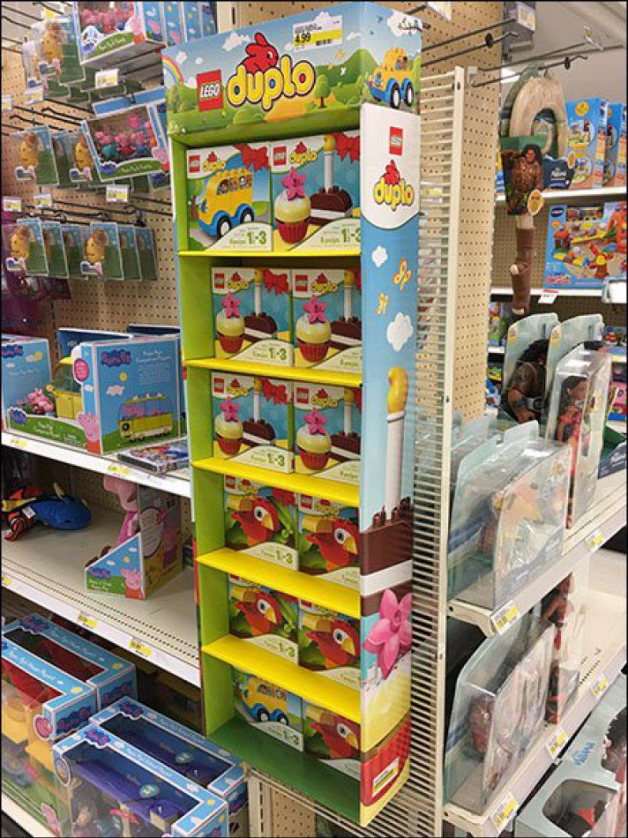
The beauty of a standard sidekick is its simplicity. It’s effective, affordable, and gets the job done. In my experience, designers often try to overcomplicate things, but for a simple promotional push, the standard design is a winner. It's usually a single-faced tray or a series of hooks on a backer card, designed to be assembled and loaded in seconds. This is critical for retail staff who don't have time for complicated setups.
Key Design Features
A successful standard sidekick focuses on two things: visibility and brand message. The header card is prime real estate for your logo and a catchy call-to-action. We often design these using lightweight yet durable materials like B-flute cardboard, which offers a great balance of strength and cost. For graphics, a direct print is fast and economical, while a litho-laminated label can give you that premium, glossy look for a slightly higher cost.
Ideal Product Categories
These displays are perfect for lightweight, grab-and-go items. Think of things like candy, batteries, lip balm, or new snack items.
| Product Type | Why It Works |
|---|---|
| Confectionery | High impulse purchase potential. |
| Small Electronics | Perfect for accessories like chargers or batteries. |
| Health & Beauty | Trial-size items or single products like face masks. |
| Seasonal Items | Great for small, themed products during holidays. |
The goal is to interrupt the shopper's journey with an offer that’s too convenient to pass up. A standard sidekick does this perfectly.
When Should You Choose a Power Wing Display for Your Products?
Got a heavier product that needs serious support? A standard sidekick might buckle under the weight, risking product damage and a messy aisle. Power wing displays are engineered with the structural strength you need.
Choose a power wing display when you need to showcase heavier or bulkier items that require extra support. They often feature reinforced back panels and stronger hooks or shelves. Use them for products like bottled drinks, canned goods, or larger packaged items that a standard sidekick cannot hold securely.
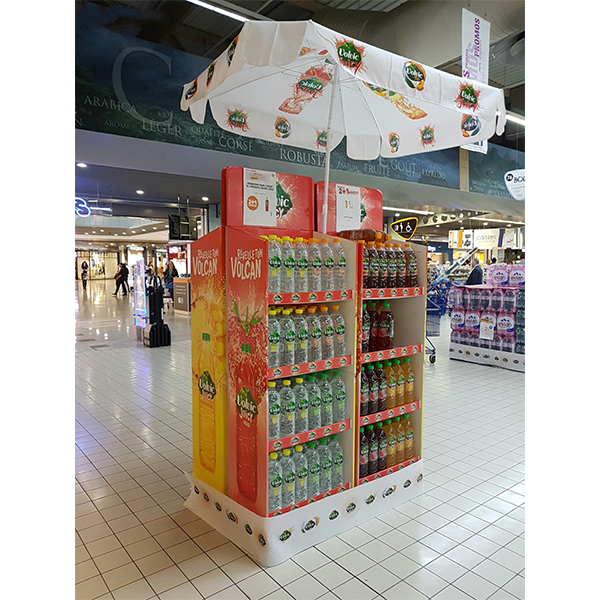
The terms "sidekick" and "power wing" are often used together, but in my design studio, we make a clear distinction. For us, a power wing is a sidekick that’s built for battle. I remember a client who wanted to display glass jars of artisanal sauce. A standard B-flute design would have been a safety hazard. We had to design a true power wing.
Structural Differences
The main difference is in the engineering. We use stronger materials and smarter construction to handle the extra weight. This includes using double-wall corrugated board, adding internal support structures, or specifying metal support bars that integrate into the cardboard design. The shelves or trays are also deeper and have reinforced front lips to prevent sagging. The clips used to attach the display to the retail shelving are also a key focus; we often use heavy-duty plastic or metal clips to ensure the display stays put.
When to Upgrade
You need to switch from a standard sidekick to a power wing when your product's weight is a concern. It’s a conversation I have with designers like Peter all the time. He needs to balance the client’s vision with the physical limits of the materials.
| Factor | Standard Sidekick | Power Wing |
|---|---|---|
| Max Weight | Up to 10 lbs (approx. 4.5 kg) | 10 - 50 lbs+ (approx. 4.5 - 22.5 kg) |
| Main Material | B-Flute or E-Flute Corrugated | Double-Wall or Reinforced Corrugated |
| Best For | Lightweight snacks, cosmetics | Bottled drinks, sauces, tools |
| Cost | $ | $$ |
Investing a little more in a power wing design saves you from the potential costs and brand damage of a failed display in-store.
Can Multi-Tiered Sidekick Displays Maximize Your Retail Space?
Have multiple small products you want to display together? A single-level display can look disorganized and fail to tell your brand story. Multi-tiered sidekicks neatly showcase your entire product line in one compact unit.
Yes, multi-tiered displays absolutely maximize retail space. By using vertical height, they allow you to showcase a variety of SKUs or a complete product family in a tiny footprint. This is perfect for cross-selling items like shampoos and conditioners or different flavors of snacks.
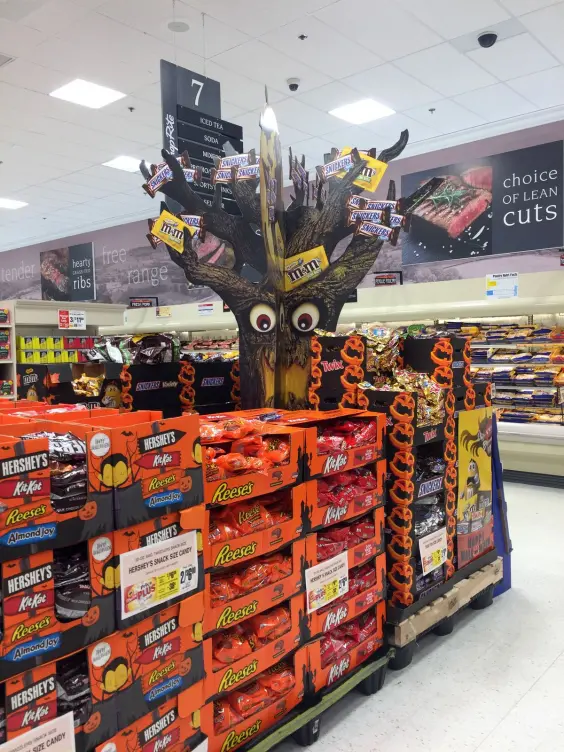
I love working on multi-tiered designs because they’re like a small-scale puzzle. You get to tell a bigger story in a very small space. Instead of just pushing one product, you can introduce a whole family of products. This is incredibly powerful for building brand recognition and increasing the average transaction value. If a customer is buying your new potato chips, a multi-tiered display makes it easy for them to also see and grab the two other flavors you just launched.
Design for Cross-Selling
The key to a great multi-tiered display is planning the customer's journey. We typically place the main, "hero" product at eye-level. Then, we position complementary products on the tiers above or below it. For example, a client selling craft kits might put their bestseller on the middle shelf, with accessory packs on the top shelf and starter kits on the bottom. The entire display tells a story and encourages shoppers to buy multiple items. We design the graphics to flow from one tier to the next, visually connecting the products.
Structural Considerations
From a designer’s perspective, stability is the biggest challenge here. Each tier adds a new stress point. We have to carefully calculate the weight distribution and ensure the display won’t tip or lean. For this, we often design the tiers with a slight backward angle or build integrated dividers that add to the overall rigidity. It's a balance between making the products look great and making sure the unit is structurally sound from the factory to the sales floor.
Conclusion
Choosing the right sidekick display depends on your product and your goals. From simple impulse buys to entire product lines, the perfect design can make a huge impact on your sales.



